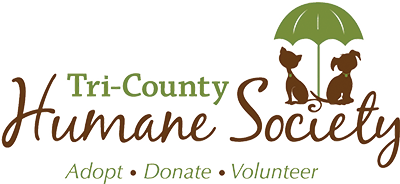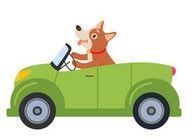The first year of your puppy's life is the most important. With the proper diet, the right training and regular veterinary visits, you will ensure that your puppy will grow into a wonderful companion. Your new puppy will adjust quickly if you are patient, consistent and show them lots of love.
Be consistent. For example, if jumping on people is OK when you have jeans on, do not reprimand the puppy for doing it when you are in your good clothes or have bare legs. They understand rules that are consistent.
Follow through. Never leave a command disregarded. If you have asked your pup to come, make sure they come. And then reward them when they do! Tossing out commands and then not waiting for them to respond will only confuse them.
Reward good behavior. Treats, praise, petting, play time - there are so many ways to reward your pup when they do what you want them to do! Dogs LOVE to please their people, and the more you reinforce the good behaviors, the more they will want to be a good dog. The key here is to reward good behaviours immediately so they associate the reward with their action.
Do NOT reward bad behavior. During training time when you have treats at the ready, make sure that you are only rewarding behavior that you want to see in your pup. It is easy to give pups treats for everything they do because they are so darn cute, but if you treat them when they do something naughty, you are reinforcing that behavior, and it will be harder to get them to stop.
Do not allow play biting. Puppies have razor sharp teeth and playful mouthing can turn into painful mouthing really fast. Not rewarding bad behavior is especially important when it comes to mouthy pups - but it is important to understand that they NEED to chew on things. Make sure that you have appropriate chew toys and bones at the ready - and if they go for your hand or your shoe, redirect them to a toy instead.
Supervise pups around children. For the safety of the pup and the child, make sure that ALL interactions involving small children are supervised.
Provide pups with a safe spot. A crate is a good place for your puppy to rest and sleep. Crates help to keep your puppy confined and out of trouble while you are busy or away. It also provides a safe haven for the puppy when he is tired or wants a sense of security. Every dog likes to have a place that is theirs and theirs alone. Some pet owners think a crate is cruel and confining, but given a choice, a dog instinctively selects a secure place in which to rest or sleep.
Use a crate to assist with house training. Puppies do not want to soil the space they sleep in, and appropriately sized crates will encourage them to hold their bladder for longer periods of time. Be aware that if your crate is too large, they will simply potty in one corner and sleep in the other! It might be wise to block a portion off if your crate is too large. (See "The Potty Wars" article for more house training tips.)
Choose the right collar. Puppies grow fast! Be sure to check your puppy's collar often to be sure it is not too tight. Also, make sure they are wearing appropriate tags in case they get lost.
Establish a daily routine for your dog. A dog feels secure having dinner, playtime, lessons and walks at the same time every day.
Socialize your puppy. Unsocialized dogs have a hard time adjusting later in life. Expose them to as many new people and environments as possible before they are 12 weeks of age. This will help prevent them from being fearful and potentially aggressive around new people or environments. Common fears include babies, children, men (especially men with beards if they have never seen a beard), people wearing hats or sunglasses, wheelchairs, walkers, other animals, etc. The more you can expose them to, the better! Puppy classes are a great way to expose pups to other dogs and people, or trips to the dog park!
Start training early. To be a good member of the family, a dog should know a minimum of three commands: come when called, walk on a leash, and sit/stay. Begin training as early as 8 weeks of age, keeping in mind that puppies have a very short attention span. Short and frequent sessions are recommended. BE CONSISTENT! Use short commands and be sure the entire family uses the same words and/or signals. Above all, make sure training sessions are a positive experience for your pup! Always end training on a positive note, using a command they know well so that you can shower them with praise.
Feed on a schedule. Scheduled feeding is generally best for puppies, with 2-3 meals a day. It can also help with house training! Choose a premium puppy food that is high in protein, making sure the first ingredient listed is a protein source (not corn or rice). Start by following the suggested quantities on the bag, and adjust as needed under the direction of your veterinarian. If you are changing foods, mix the new diet with the former food, gradually increasing its proportion over the course of 3-5 days. Clean fresh water should be available at all times.
Bathe only as needed. Bathe only as necessary with a shampoo specifically for pets. Bathing too often will dry out the natural oils in your pup's coat. If it is cold outside, be sure your pup is thoroughly dry before allowing them out in the cold. If you bathe in a tub, placing a towel on the bottom will make your pet feel more secure.
Spay or neuter your pup. The advantages are many. Altered pets are less likely to roam to find a mate, which can prevent them from getting lost or hit by a car. Neutered males are less likely to mark their territory, and are less aggressive toward other dogs. Neutered males also can not get testicular cancer and have fewer prostate problems and tumors. Spayed females can not get pyometra or uterine cancer and their chances of mammary tumors are greatly reduced. There are no benefits to allowing females to have a litter or go through a heat period. Spay/neuter surgery can be performed as early as 8 weeks of age.
Toys are a MUST! It's important for your puppy to have toys and for you to choose them carefully. Chew toys maintain the health and integrity of the jaw muscles and help prevent periodontal disease. Toys that promote good dental health include hard chew items made of rubber, nylon and rawhide. Choose something your pet can't chew up or swallow. Do NOT give them old sneakers or socks! Animals can't tell the difference between your beat-up shoes and your good ones. With well-chosen toys, you can help prevent destructive chewing or other negative behavior by giving your pup an appropriate outlet. You can also tire a rambunctious pup by having it chase a ball or Frisbee. Once you have chosen the right toy, teach your pet to have fun with it. Don't place a new ball on the floor and expect him to know what to do. Bounce the ball or roll it to get his attention. The more interactive, the better for developing a lasting bond with your new puppy!









